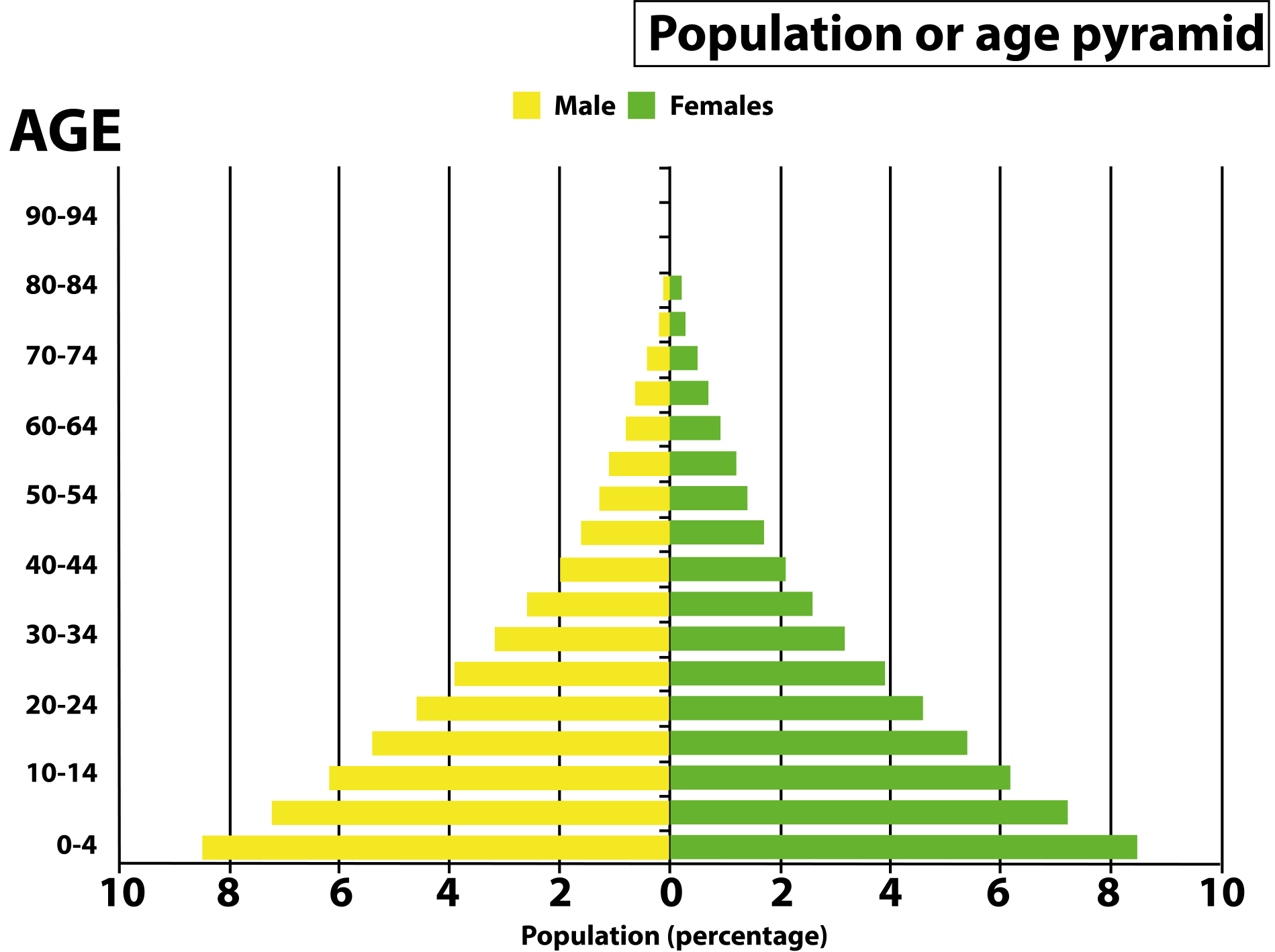
What are age pyramids? Name different types of age pyramids.
Answer
433.1k+ views
1 likes
Hint:Age pyramids are also known as population pyramids or age-gender pyramids. The distribution of organisms is made by observing certain characteristics and the resultant figure so obtained is in the form of a pyramid.
Complete answer:
A population pyramid is also known as an "age-gender-pyramid". It is a graphical illustration that shows the distribution of varied age groups in a population that forms the figure or shape of a pyramid when the population is growing.
Males are conventionally shown on the left and females on the right side., and that they could also be measured by the raw number or as a percentage of the entire population. This tool is often used to visualize the age of a selected population.
It is also utilized in ecology to work out the general age distribution of a population; a sign of the reproductive capabilities and likelihood of the continuation of a species.

There are three types of age pyramids present which were divided based on fertility and mortality rates of a country. They are as follows-
- Stationary" pyramid: The percentage of the population in this condition generally remains the same throughout the time period. It means that the death rate and birth rates are equal.
- Expansive pyramid: Expansive population pyramids depict populations that have a bigger percentage of individuals in younger age groups. Populations that come under these have high fertility rates with lower life expectancies.
- Constrictive pyramids: Constrictive population pyramids are named so because they're constructed at the bottom. there's a lower percentage of younger people. There are declining birth rates since each succeeding age group is getting smaller and smaller.
Note: Many of us get confused between the population pyramid i.e age- sex pyramid and ecological pyramids. An ecological pyramid is a method in which the relationship between different organisms in an ecosystem is represented graphically. Each of the bars that make up the ecological pyramid is based on who eats whom.
Complete answer:
A population pyramid is also known as an "age-gender-pyramid". It is a graphical illustration that shows the distribution of varied age groups in a population that forms the figure or shape of a pyramid when the population is growing.
Males are conventionally shown on the left and females on the right side., and that they could also be measured by the raw number or as a percentage of the entire population. This tool is often used to visualize the age of a selected population.
It is also utilized in ecology to work out the general age distribution of a population; a sign of the reproductive capabilities and likelihood of the continuation of a species.

There are three types of age pyramids present which were divided based on fertility and mortality rates of a country. They are as follows-
- Stationary" pyramid: The percentage of the population in this condition generally remains the same throughout the time period. It means that the death rate and birth rates are equal.
- Expansive pyramid: Expansive population pyramids depict populations that have a bigger percentage of individuals in younger age groups. Populations that come under these have high fertility rates with lower life expectancies.
- Constrictive pyramids: Constrictive population pyramids are named so because they're constructed at the bottom. there's a lower percentage of younger people. There are declining birth rates since each succeeding age group is getting smaller and smaller.
Note: Many of us get confused between the population pyramid i.e age- sex pyramid and ecological pyramids. An ecological pyramid is a method in which the relationship between different organisms in an ecosystem is represented graphically. Each of the bars that make up the ecological pyramid is based on who eats whom.
Recently Updated Pages
Master Class 4 Maths: Engaging Questions & Answers for Success

Master Class 4 English: Engaging Questions & Answers for Success

Master Class 4 Science: Engaging Questions & Answers for Success

Class 4 Question and Answer - Your Ultimate Solutions Guide

Master Class 11 Economics: Engaging Questions & Answers for Success

Master Class 11 Business Studies: Engaging Questions & Answers for Success

Trending doubts
Give 10 examples of unisexual and bisexual flowers

Draw a labelled sketch of the human eye class 12 physics CBSE

Differentiate between homogeneous and heterogeneous class 12 chemistry CBSE

Differentiate between insitu conservation and exsitu class 12 biology CBSE

What are the major means of transport Explain each class 12 social science CBSE

What is the difference between resemblance and sem class 12 social science CBSE




